The Drive to Build the World’s Largest Telescope
The Canadian government approved the construction of the telescope in October of 1913. Following approval, William Edmund Harper, an astronomer at the Dominion Observatory in Ottawa, tested four possible sites for the telescope: Medicine Hat, Banff, Penticton, and Victoria. Plaskett selected Victoria, BC because of the stability of the star images and the temperate climate. Arthur Williams McGurdy introduced Plaskett to the Premier of BC, Sir William McBride, and this meeting resulted in the province of British Columbia agreeing to buy the land required and to build a road to the telescope. Harper would later transfer to the site and eventually become its second director in 1936.
On May 13, 1914, the headlines of Victoria newspapers proudly announced the upcoming arrival of a “Huge Telescope for Victoria.” The city was very excited to become home to the world’s largest telescope. The site chosen for the telescope was Little Saanich Mountain, seven miles north of the city. Workers cleared and leveled the top of the hill by hand and with steam-powered machines.
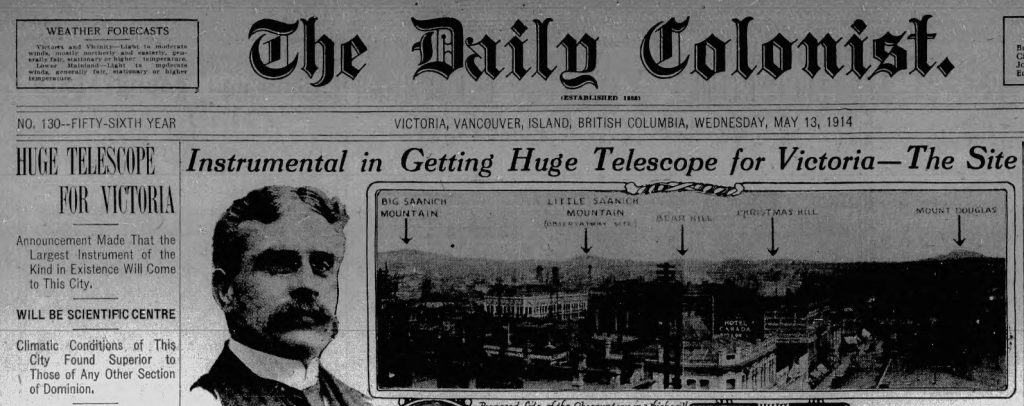
While the telescope project had been approved in 1913 it was not announced until May 1914. In part, this was to ensure that the owners of the proposed site would not increase the price.
The glass blank for the mirror was cast in Belgium at the Saint-Gobain factory on the border with France. Master optician John Brashear of Pittsburgh was eager to start work on the mirror blank and asked for the blank to be sent as soon as possible. The blank left for North America a few days before the start of the First World War. Brashear took three and a half years to figure and polish the mirror, and the result was the finest mirror ever made.
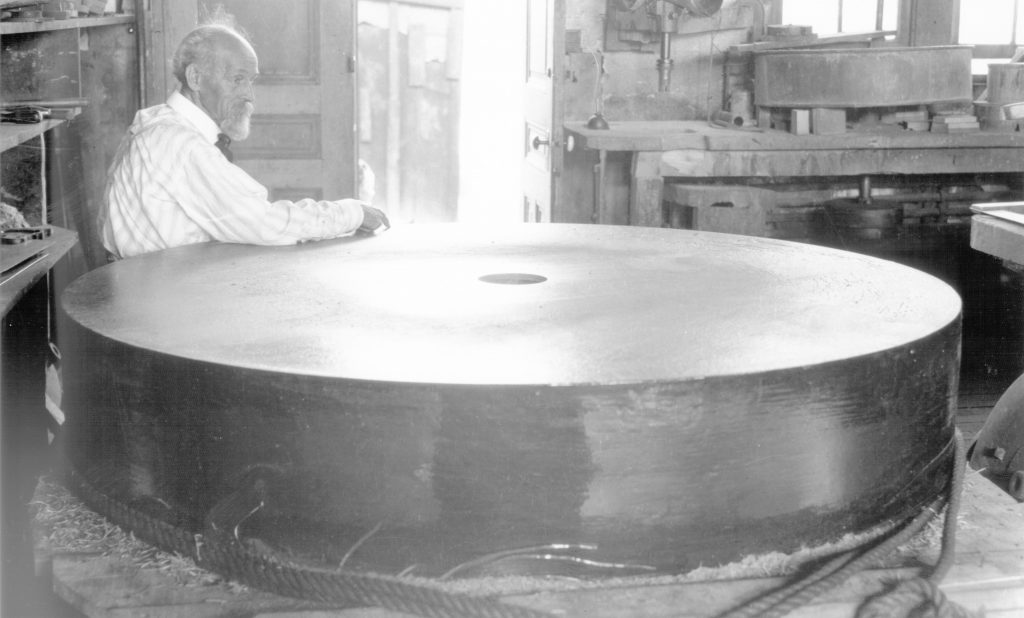
Master optician John A. Brashear with the 1.8-m mirror blank. He was admired and beloved by fellow western Pennsylvanians and international astronomers, who familiarly called him “Uncle John.”
The Warner & Swasey Company of Cleveland won the contract to build the telescope and dome. Plaskett designed the telescope so that the whole sky could be seen through it. It was also able to quickly move from one star to another. The company completed a movable 1/10th scale model of the telescope in 1915. This model won an award at the Panama-Pacific Exposition in San Francisco that year, and it now resides in the Visitor’s Centre, named “Centre of the Universe,” close to the observatory site.
Local labourers completed the construction of the dome in 1916. The pieces of the telescope arrived from Cleveland and were taken to the site by horse-drawn wagons. Workers finished installing the telescope in October 1916. Plaskett invited local dignitaries to see the magnificent telescope and dome. The only missing component necessary for a working telescope was the mirror.
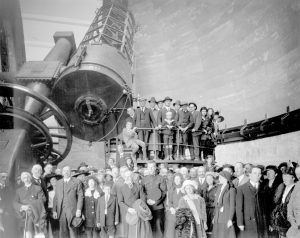
Local amateur astronomers and others gathered on October 21, 1916, to see the completed mechanical structure of the telescope. Included in the gathering were Arthur Williams McGurdy who introduced Plaskett to the Premier of BC. This led to BC’s participation in the project
The mirror was finally completed in April 1918 and was loaded onto an express train for Victoria. It arrived six days later on April 26. Plaskett wasted no time installing the mirror and a little more than a week later he recorded the very first data with the world’s largest telescope.
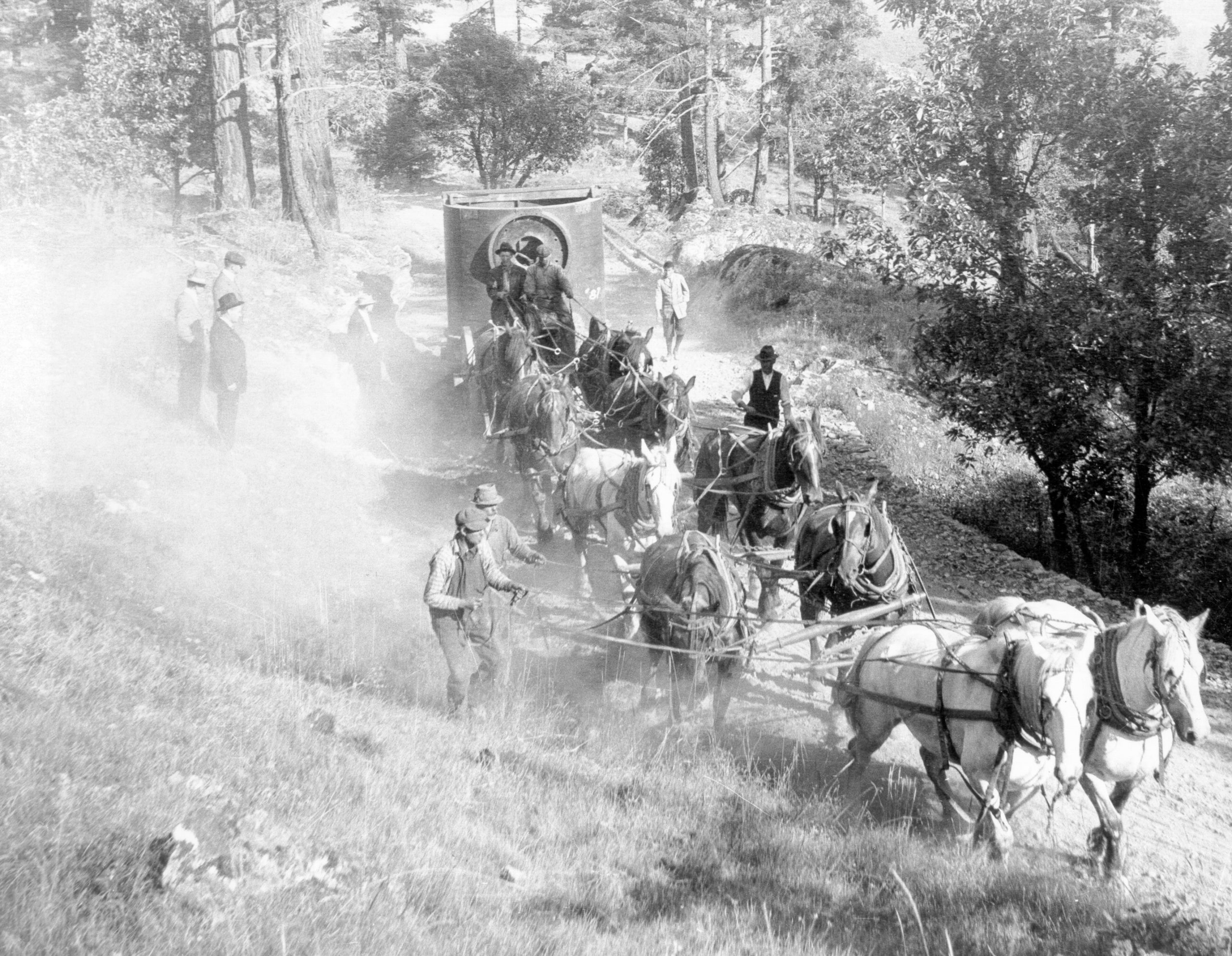
A large section of the telescope being hauled on the dirt road up Observatory Hill by a team of horses. The motorized vehicles of the time could not handle the heavy pieces of machinery. The road was design with an almost constant grade that was suitable for horse teams.
The grand affair of the official telescope opening took place on June 11, 1918. Plaskett announced that the telescope would be open to the public the following Saturday night, and this tradition continues to this day.
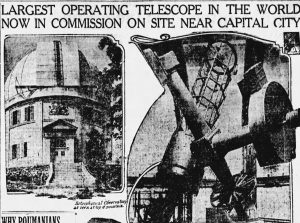
The telescope was the largest in operation when it opened in 1918. The official opening was timed to be just after the total solar eclipse of June 1918. The eclipse path passed through Washington state. This timing made it easy for astronomers viewing the eclipse to make the trip to Victoria.
At approximately the same time, George Ellery Hale and his colleagues working in California had started to build another huge telescope, the 2.5m Hooker telescope on Mount Wilson. This telescope would be the instrument used by Edwin Hubble to discover that there were other galaxies far outside our own and that the universe was expanding. The Hooker telescope saw its first light in November 1917 but was not fully operational until October 1918.
While the new telescope in Victoria was only the largest working instrument in the world for a few short months, its place in history as one of the most important scientific instruments is unchallenged.

